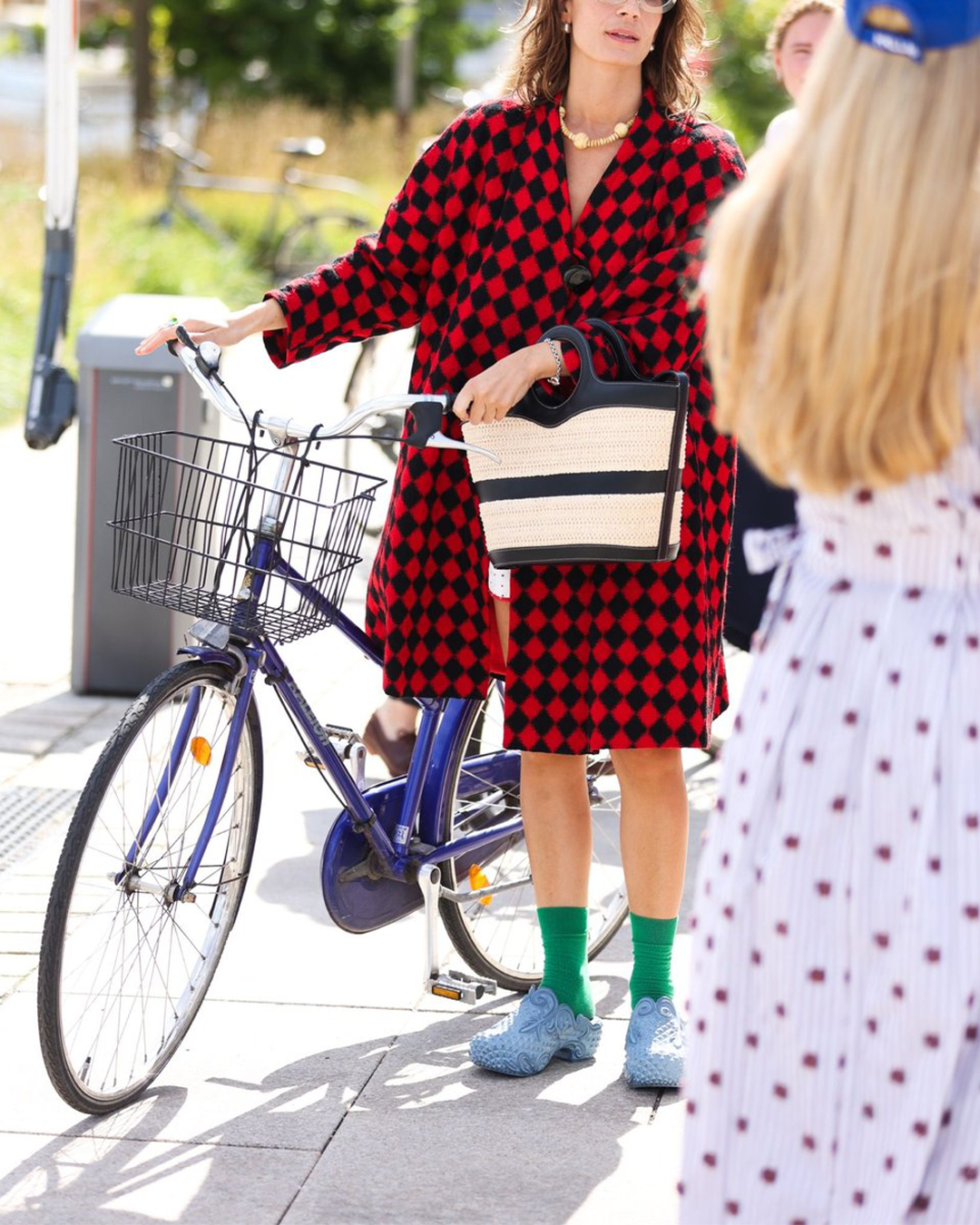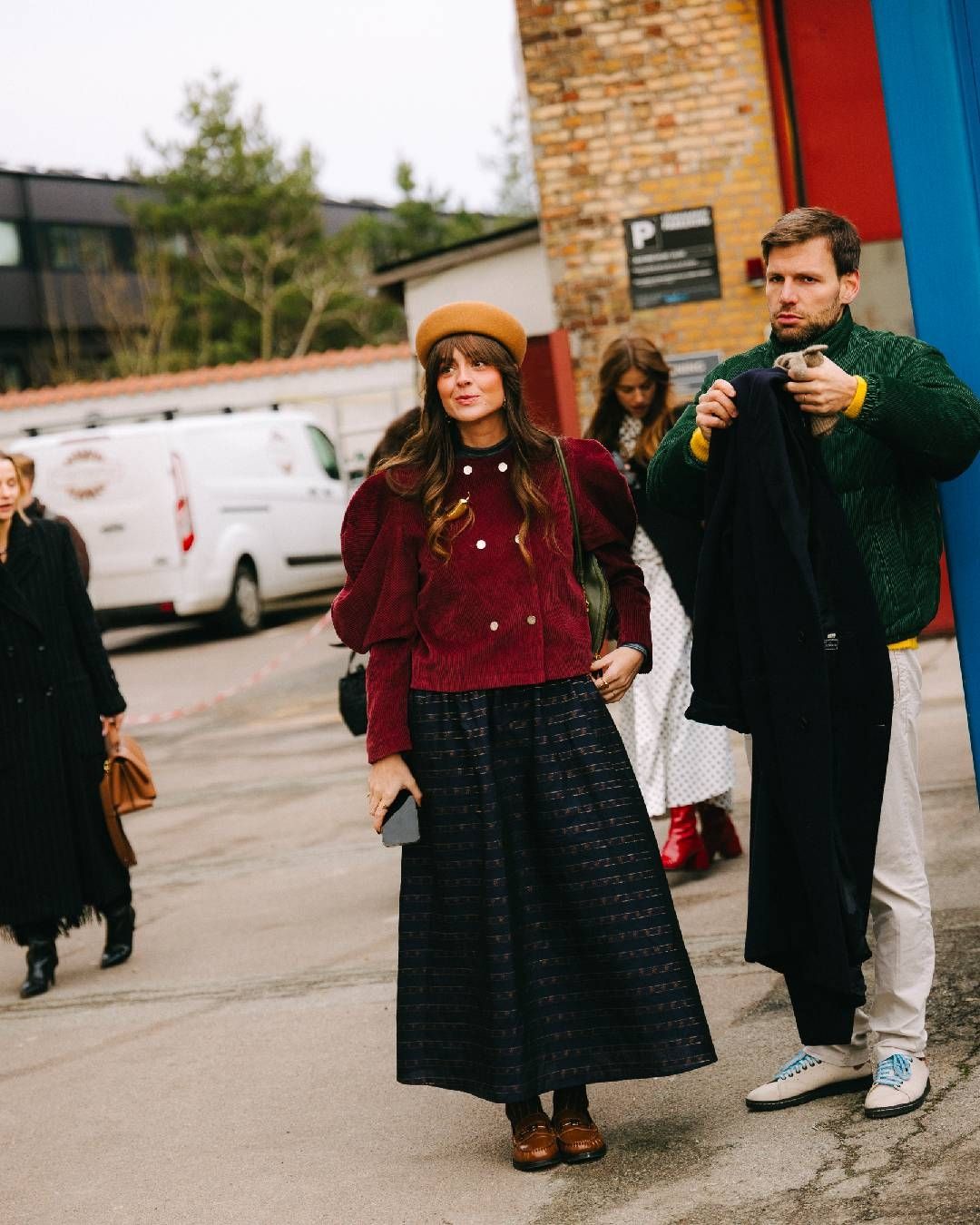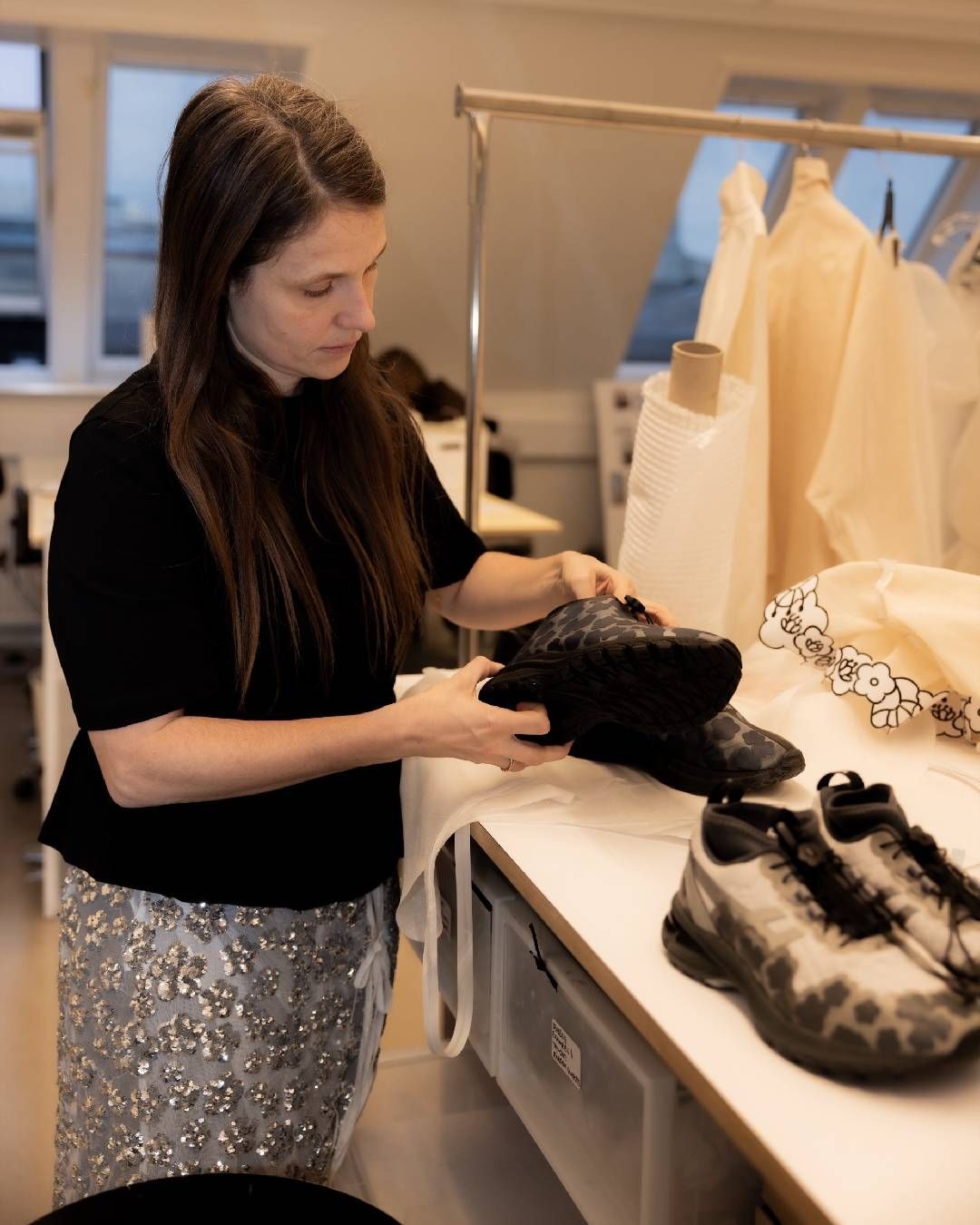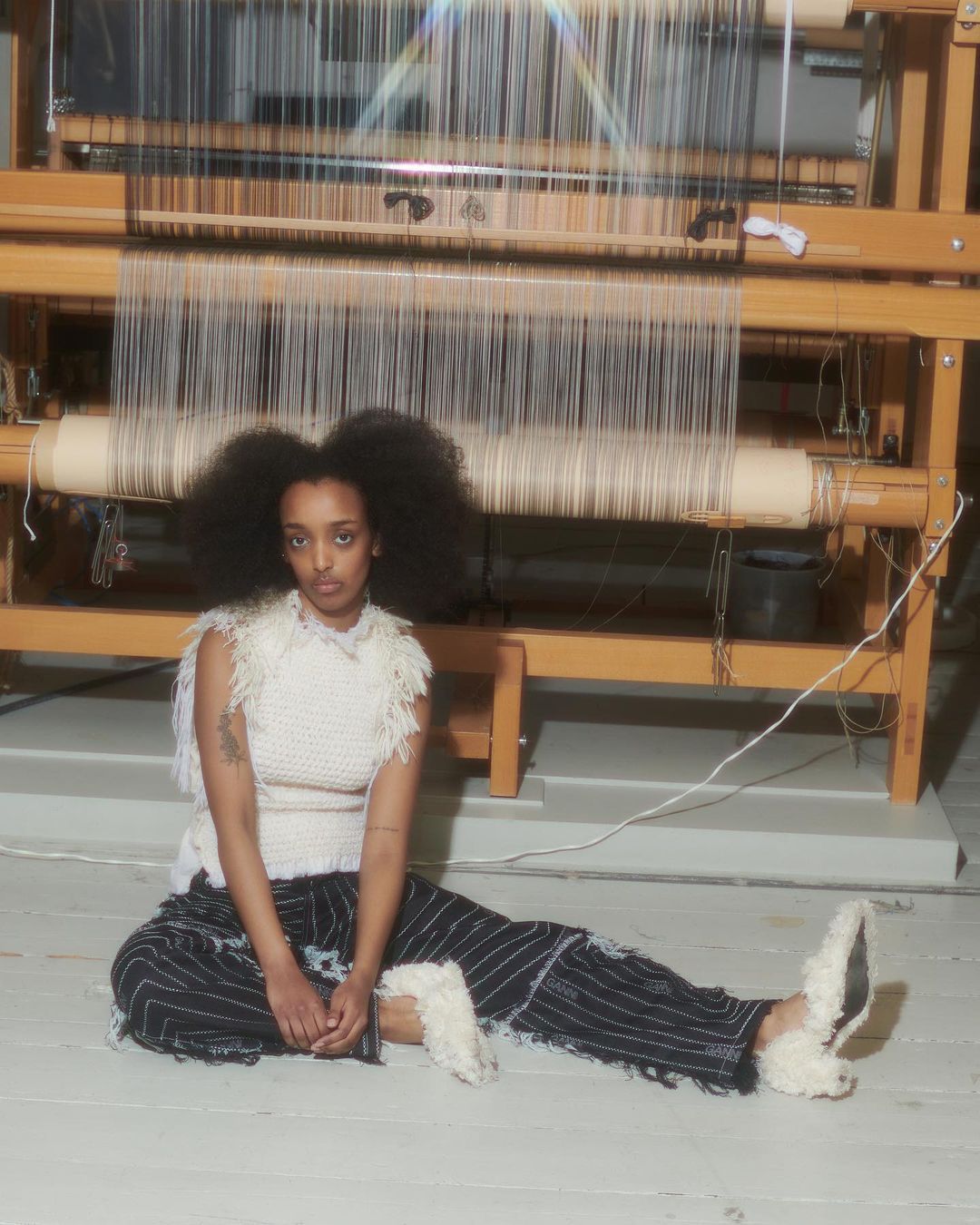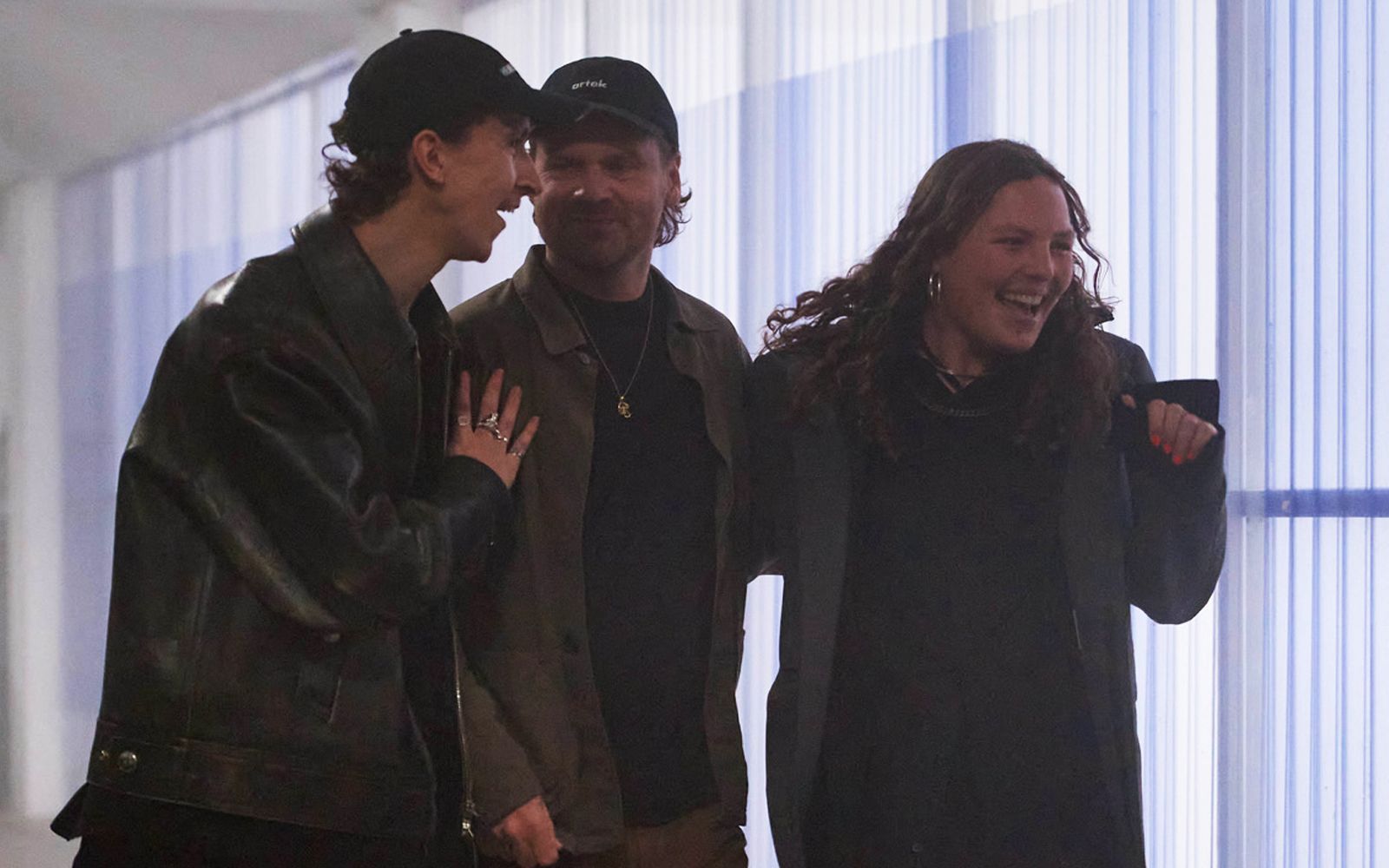
Inside Wood Wood's new life: interview with Cecilie Engberg and Dominic Huckbody On the occasion of CPHFW, we met the two designers called upon to change the history of the Danish brand
Living in Copenhagen is not like living in any other European capital. For the weather, certainly, which is capable of changing completely in a matter of minutes, but mostly for the mood that pervades the city. «For us, Copenhagen is a source of inspiration. If you look at the young people on the street you can immediately see that they have a unique attitude,» Cecilie Engberg tells me when we end up talking about the city's role in what is Wood Wood's new creative course. The brand, which recently celebrated its first 20 years, is at the center of what could be described as a true reboot, a process of renewal that starts with the choice of the two designers called upon to rethink the brand: Cecilie Engberg, indeed, and Dominic Huckbody. Respectively leading the womenswear and menswear of what the brand calls "a collective without a creative director," the two presented their first collection during the last Copenhagen Fashion Week, giving us a glimpse of the brand's future. «There were some of my elements in the last show, but this latest one is my creation,» explains Dominic - the newest of the two - when I ask him about the creative process behind "Heaven Out Here." Presented inside a set designed to resemble the space of a rave party, the brand's new collection immediately made clear Wood Wood's renewed ambitions and chosen future direction. «With each show, we are transforming more and more into the brand we would like to be, moving away from what everyone expects when it comes to Wood Wood and moving closer to the idea of a more contemporary brand,» Dominic tells us in our meeting a few days after the show, when I meet him and Cecilie in the brand's showroom. In Copenhagen, of course.
Although they are both very young, the experiences they have accumulated over the years make Cecilie and Dominic a pair as close-knit as they are talented, who can count on a resume that combined boasts experience at Balenciaga, Burberry, and Martine Rose. «We come from two very similar schools of design. When one comes up with an idea, it's as if the other already knows what to do,» they reveal to me when I ask them about their working method, one that stems first and foremost from a shared vision of the brand, an «open space where you are free to reinterpret the way you want to dress,» as Cecilie puts it. For her, a danish by birth, working at Wood Wood has a greater meaning related to the brand's historicity, but also to her desire to renew it and take it in a more personal direction. «In the past, the brand's idea of womenswear was mirroring that of the man, the boyfriend, and the girlfriend. Now it's two people hanging out, two very cool friends walking around together,» she tells me to explain her vision of WW in which, despite the idea of breaking with the past, Wood Wood's heritage and 20-year history remains central. «I think the lesson we both learned from working in big brands was to understand the history and then use it within your idea. We don't want to forget Wood Wood's past or the work of other designers, but we want to make the brand more contemporary,» Dominic says. «It's always interesting to look at history as a reference point. If we think back to 20 years ago when Wood Wood was founded, we have to ask ourselves how people wore t-shirts at that time. Understand what kind of impact it had on what people wear today,» Cecilie then adds.
To bring this ambitious project to fruition, the designers can rely on a city like Copenhagen, a place ideal for turning everyday life into work inspiration. «It's a hard city to describe if you've never been there. It has a much more relaxed lifestyle, it engages you and you become part of it," Dominic, an Englishman by birth with a past split between London and Paris, two cities «with incredible energy but very intense,» tells me. «Living here changes the way you shop and dress. You often use your bike to move from one part of the city to another, so what you wear is not made to move by cab or subway. It also changes your mindset as a designer,» Cecilie continues, further emphasizing the connection between Copenhagen and Wood Wood, part of Danish culture. But despite the deep connection to its roots, the future the two envision for the brand is beyond Danish borders, an overarching vision that Dominic and Cecilie have fully embraced in what is for both a natural evolution of their careers. With backgrounds in big brands, both now have the opportunity to shape Wood Wood according to t own vision, working on a project of an international scale with almost as much creative freedom as an independent project. «When you talk about young people in fashion, you never think about all those people, maybe creative directors or assistant designers, who are struggling to get ahead. When I think about where we are, what we can do, and how much we can learn, I realize I made the right choice for growth,» Dominic replies when we end up talking about the possibility, in the future, of seeing them working on t own brand. «Everyone dreams of having t own brand at some point. Making money doing exactly what you like every day. But having own brand means constantly being under pressure.»
The pressures not lacking even in the Danish latitudes, where, however, it has found its way into the form of Copenhagen Fashion Week, which has long since become a benchmark not only for Scandinavian fashion but for anyone looking for a fashion industry that is different from those of the big European capitals. «Thertely a need to slow down. And I'm not just talking about the environmental impact, but also the impact on people. Both Cecilie and I have lived in other cities, but the work-life balance that there is in Copenhagen is unique. It's the way it should be everywhere,» comments Dominic. Call it "slow fashion," but the air around Larsbjørnsstræde 3 is that of a slow revolution that puts the person at the center, whether the designer or the buyer, to translate the spirit of a city into something capable of staying collection after collection. «It's going tally important for the brand to continue to develop its unique point of view, to make sure it keeps current customers and attracts new ones,» Ida Petersson, Buying Director at Browns tells me a few days later, commenting on what seems just the beginning of something much bigger.










































